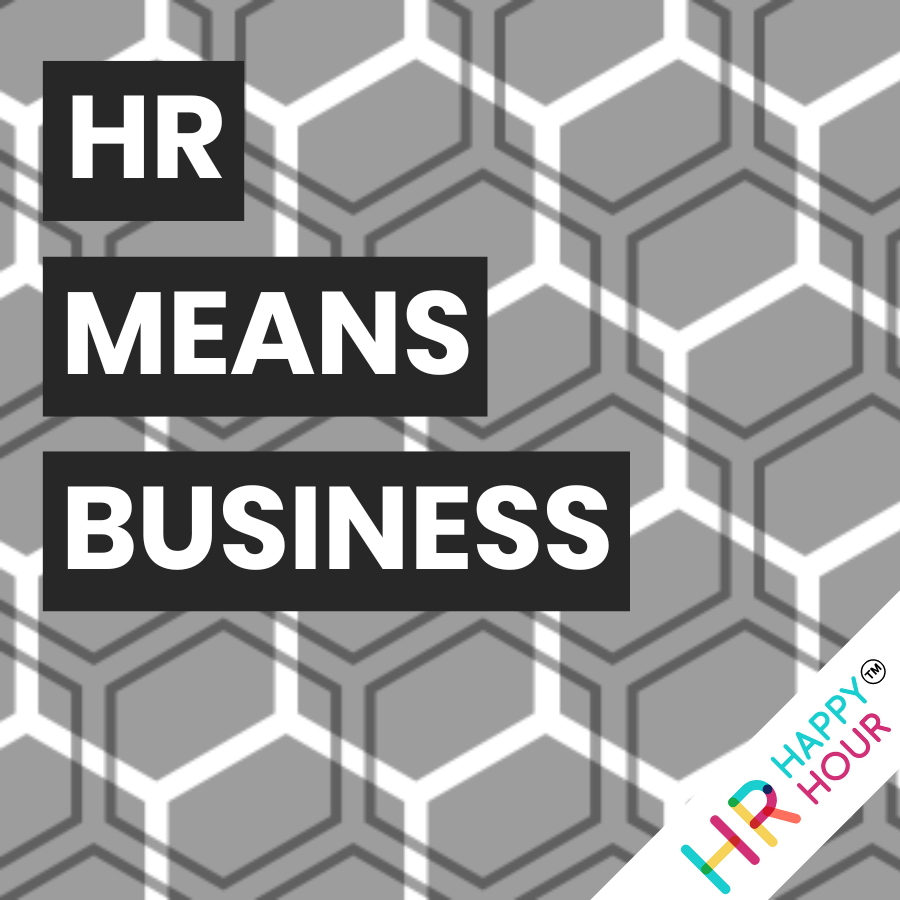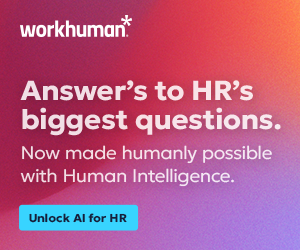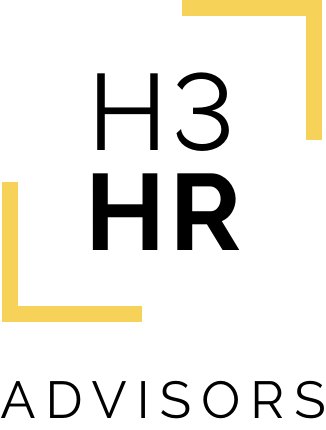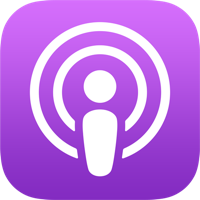Creating a Dynamic Workforce: Innovating Employment, Growth, and Transitions
Hosted by

Mervyn Dinnen
Analyst, Author, Commentator & Influencer
About this episode
Creating a Dynamic Workforce: Innovating Employment, Growth, and Transitions
Host: Mervyn Dinnen
Guest: Abigail Britnell, European Account Manager at Top Employers Institute
In this episode Mervyn Dinnen talks to Abigail Britnell from global certification consultancy Top Employers Institute about their latest research on how to create, develop and retain a dynamic workforce.
During the conversation they cover:
- Different and creative ways that organisations are employing people and accessing skills and knowledge
- The key role the contingent workforce plays
- Supporting all workers in their career and skill development
- Facilitating self-directed learning
- Leveraging HR Technology to empower employee choice
- Importance of successful onboarding and offboarding for all workers irrespective of employment relationship
Read the report here
Thanks for listening! Remember to subscribe to all of the HR Happy Hour Media Network shows on your favorite podcast app!
Transcript follows:
Mervyn Dinnen 0:18
Hello and welcome to the HR Means Business podcast, which is part of the HR Happy Hour Network. I am your host, Mervyn Dinnen. In 2024, there is a lot of discussion and debate around the workforce, the changing workforce, people staying in the workforce longer. People with different expectations coming into the workforce. I recently was was quite taken by a piece of research from the top employers Institute who are an organization I know well, and who do some really excellent research and their paper navigating a dynamic workforce. And I’m inviting Abigail Britnell, all from Top Employers Institute on today to talk about the findings. And some of the key trends we can be looking out for Abigail, welcome to the show. Would you like to introduce yourself?
Abigail Britnell 1:06
Hi, Mervyn, thank you for inviting me to speak. So I’m Abigail, and I work with the Top Employers Institute to help organizations to develop their people practices. As an organization, we’ve been going for 32 years now. And as Mervyn mentioned, research by excellence and people practices. We were extremely excited to announce 2300 top employers in January of 2024. They are for different locations and different sizes. But we are the only global institute in the world that can certify for HR practices and excellence.
Mervyn Dinnen 1:48
Excellent. And in terms of the research paper, which has just been produced that we’re going to be discussing, what was the thinking behind it? Was this a particular trends that you wanted to identify? Or is this what the conversations you were having with employers, what we’re bringing out is something that was top of mind.
Abigail Britnell 2:05
So our HR best practice survey covers six domains and 20 topics, but it digs into 255 HR best practices. And what we kind of we noticed that the workforce, and execs its expectations are have already changed, it’s becoming much more fluid isn’t a kind of no longer one job for life. And we noticed that a lot of full time employees are working alongside a contingent workforce. So people from the gig economy contractors, and we’ve identified already that basically the needs of both the employer and the employee, have already changed.
Mervyn Dinnen 2:51
Okay, now, that’s something myself and my colleagues and that older have written about something called Total talent thinking where the idea is that it’s not just you know, full time employees, part time employees, it’s, it’s all the people who input into the if you like the output of the organization, be they gave me their fraction or be their contingent, it could be tasks, they might not know, they’re working on specific projects and things. And you obviously the very beginning, when, you know, one of the first key findings for anybody who downloads report, and we will put a link to the download in the show notes. You’re talking about contingent workers and valuing everybody who contributes?
Abigail Britnell 3:32
So there are four, four key recommendations in the report. And the first one is basically to just include the contingent workforce, they should have the same access to the opportunities and, and benefits that full time employees have. This creates a positive culture. And then also you have that pool of engaged and integrated workers that you can quickly retrieve when you need them. And we’re finding much more that businesses are relying on those those kinds of freelance gig economy workers. We I’ve got a little bit of an example actually, it was comes from Michelin. And what they did was that they approached all of their employees to kind of define new frontiers within their organization. So what they did was they allowed every employee including the contingents to suggest the kind of the strategic direction of the organization. And that was done through an app and through co construction workshops. And what that allowed Michelin to do was to respond to the vast knowledge of their workforce, take that include that in their strategy and help them to define their, you know, their future with a real purpose.
Mervyn Dinnen 4:54
A couple of interesting things as well that I found, one that you in the report you reference some research by an organization consciously unbiased, that showed that nearly two thirds of leaders prioritize DEIB for their employed workforce. But only around a quarter did the same for their contingent workforce. Is this something you think people will be addressing? Or is this Is it because the I suppose the employed workforce are close, there is a responsibility to them? And is this somewhere where maybe the foot off the pedal slightly when it comes to the contingent workforce?
Abigail Britnell 5:36
we are seeing more and more that the contingent workforce has been included in this in this planning. Neuro inclusion is very much a fresh topic at the moment. We are working with organizations and connecting the moment to talk about how we go about this, what languages should we be using, what kind of initiatives have been implemented, what’s been working, what’s not been working, and it’s very much in that conversation or start piece. So we’re kind of going on this journey to make sure that all of the neuro inclusion is there, and that it must include the contingent workforce.
Mervyn Dinnen 6:20
Hey, when we come on to, I suppose personal and career development, and I suppose I’m I’m, I’m going from from key finding one slightly blurring into key finding to which was about, which I’ll ask you directly about in a moment, because it’s about supporting employees with their own career development? And is this something that you feel that, again, the contingent workforce, or the non permanent workforce, shall we say, are something that they are again, excluded from within organizations.
Abigail Britnell 6:55
I would say that, that at present, not enough organizations are seeing the true true value of the contingent workforce, which is how we’ve kind of found this research and these findings, and that it is such a big recommendation in the view to trend. So I would say that there is there is a lot of work to be done. We’ve seen that retail, financial services, manufacturing and automotive have a lot of room to grow in this area. And you know, it possibly comes down to the structure of the workforce, you’ve got the more blue collar workforce, but implementing things like mentor and coaching, they can be done anywhere. And that is a really big first step to making those employees feel engaged, valued, and able to offer some, you know, to offer their insights, the workforce has this massive amount of knowledge about your organization, and you kind of you need to sort of, to tap into that. But by allowing people to learn to grow to upskill, you’re going to retain those within the workforce. And I think with things like AI, chat, GPT, we’re already seeing how AI is, is changing the skills that organizations are needing to rely on, but also that that workforce is falling behind. I mean, I think it’s about 75% of organizations are struggling to to get the skills that they need. Whereas if you focus on the people within your organization, and empower them to do you know, to direct their own career evolution, that doesn’t, you know, you’re keeping that that valued talent, and they don’t necessarily have to follow that forward trajectory anymore. You’ve got this, you’ve got these skills, you’ve got these transferable skills, you can move people, again, within the organization, the structure of organizations is becoming more fluid, depending on where you can utilize those skills and the best results for the employee, which obviously then impact the overall business model.
Mervyn Dinnen 9:07
Yes, there’s also a finding, I suppose alongside this, about facilitating opportunities to learn from one another.
Abigail Britnell 9:15
Absolutely. Yeah, absolutely. I mean, we’ve got we’ve got a little bit of an example, which is in the report, but img Italia created a job orientation week. And it’s five days of inspirational and informative meetings and offerings. And that’s, you know, hard and soft skills training, reviewing the HR tools and learning that are available to their employees, both for professional and personal growth, and looking at new opportunities and job rotations. And 94% of employees gave that really positive feedback that they felt valued and empowered to be a part of the organization.
Mervyn Dinnen 9:59
I’m now that is great, because it’s, again, one of the one of the other trends, obviously, what I won’t be talking about in this research, but I’ve referenced in one or two other podcasts conversations I’ve had is about the kind of the frontline workforce and the forgotten 80%, who feel kind of who often feel that they don’t have the opportunities that are afforded to them are the, I suppose the permanent kind of, should we say in office type roles. But that So, and part of that is the access to learning and knowledge. So I suppose it’s the what’s important as well, as you mentioned, AI is that kind of the speed at which skills are developing, and skill demands are evolving, is very, very fast. So in terms of providing resources, I know, this is one of your key findings as well. What’s the advice in terms of providing resources to promote kind of self directed learning to everybody.
Abigail Britnell 10:59
So, technology is going to be a bit of a driver for this. And I think we, we need to kind of start looking at embracing the digital and making it human centric, and making sure that we’ve got those kind of ethical guidelines in place. But that does mean providing access. And aren’t we, you know, we there are industries where people don’t necessarily have access to an email or smartphones. And it’s about making sure that though, you’re offering areas where people can either go and find something, you know, some independent learning, or you can facilitate those opportunities for people to learn from each other. You can, you know, to make this kind of work, the Agra an organization and we are working with HR, they need to build, build a skills framework, and encourage employees to ask for and to create a culture of learning that, you know, that they feel is suitable for them within their role, but it fits within that within that framework. And then for employees, what that delivers is, is professional and personal growth, but also upward mobility through the kind of the role diversity, and I think that’s something that’s really important. And then secondly, for the organizations, what they then developed is a contingent workforce, which may stay longer, and they will be happy to return, you’ve got that increase in the kind of the morale and the sense of belonging to the organization. But it also improves the employer brand, you become an organization that people know that they can come to, that they can learn, they can return. And especially with Gen Z, you know, the kind of the 18 to 39, they are not looking for one long lifetime career anymore. This is this is not the way it’s gonna move forward. And it’s something that for Gen Z, that kind of independent learning, rather than at rather than, you know, kind of waiting for an expert to come to them is really important. And they want to work for organizations that can offer this.
Mervyn Dinnen 13:11
There’s a line in the report that are the research, I love that employers need to recognize that employees want to be the captain of their own ship. And it’s kind of this kind of self directed, it’s kind of, they know, I think I’ve used the liner a few times for about digital talent has intellectual curiosity. They know there’s their jobs are changing and evolving, they know the skills have to be kept up to date, and they’re constantly evolving. And they want like access to the knowledge that they need to know as and when they need to know it. And there’s a couple of interesting,
Abigail Britnell 13:46
I was just oh, sorry, I was just gonna say on that point, actually, because our analysis demonstrates that those practices related to self directed learning, they drive employee engagement, internal promotion, and profitability. And there are a couple of industries kind of, especially retail and food and beverage, and they have a really big opportunity to reduce that employee turn and the costs associated with that. We know we know these industries are well known for that. But as these kind of skills and things evolve, we need to really, you know, take this opportunity and and evolve with the workforce.
Mervyn Dinnen 14:26
And you’ve got a great example, in report nestle in Brazil, kind of 97% talent retention. With using, I suppose, you know, the technology to kind of empower employee choice in learning. And also the you mentioned kind of online learning communities as well. Is this a growing trend, do you think?
Abigail Britnell 14:49
Absolutely, absolutely. It’s a growing trend, but that those online communities are also being mixed with a kind of out On site, opportunities to learn. So where we’ve got the hybrid and the flexible working and people are on these online communities, organizations do want people to come back into the office, but employees have to have a real purpose to come back in. And to be able to go in and to take value and learning where and see your employee is see your colleagues share what you’ve been doing, not only empowers the individual, but it empowers the group.
Mervyn Dinnen 15:31
And, yeah, there’s also a reference to some work, I think, scientists at Stanford University, about the Gen Zed employees, you know, independent learning is much more natural for them. Whereas historically, people are kind of, oh, we need to learn this new system, we’ll wait for somebody to show us whereas the the emerging workforce are much more there’s a new system, how do we use it, again?
Abigail Britnell 15:56
That does come down to technology that Gen Z have grown up with it, don’t and also, we had the pandemic as well, which meant that, you know, people that were in the last years of school that are now joining the workforce, had to learn online, they had to go and get these resources, because they weren’t, you know, they weren’t in that environment where it was being fed to them. So the, they’re quite used to going finding these resources, learning, communicating online. And, uh, but I think it is still important to remember that, that you’re learning from other people around you, learning from managers, I think, is important that this new new part of the workforce does have that kind of hands on approach mixed with the online communities, and being able to, so for instance, for me, you know, we we work with companies to improve the HR practices. So I approached top employers and said, You know, I would really like to do my CIPD, level three for my personal and my professional growth. And that’s something that I’m now doing. So I’m able to both grow professionally and personally. And that’s just one example of how, what a difference that empowerment can make.
Mervyn Dinnen 17:20
Definitely, and personalization is important as well, because I know, in that section of the research, you reference, I think, some research from from Facebook from analysis of exit interviews there. Yeah. And that’s, again, to do with managers who organized or crafted work around employees, personal interests, and priorities were had a much higher retention rate.
Abigail Britnell 17:43
Definitely, uh, but that kind of brings us on to the point about, you know, recommendation number four, which is to facilitate that smooth transition in and out for all employees.
Mervyn Dinnen 17:55
I have seen, you can’t see the joy, and this is it’s so smooth transition. Which brings us on to key finding number four, yes, yet.
Abigail Britnell 18:04
So, you know, the dynamic workforce is creating a lot more traffic between organizations. And our data shows that 69% of top employers optimize the onboarding experience, but the same cannot be said for the off boarding. And it’s, we’re at a point now where employers need to own the leaving process. And they need to take a much more holistic approach and take advantage of the knowledge that they can learn from the people that that are moving. We, as an organization have recognized that gap. And that’s why we’ve introduced this practice into our HR Best Practices survey this year. I mean, just there are just three basic key benefits from strong offboarding. And number one is that, you know, when people are leaving, and you’ve got contingent workforce, not people are not leaving for bad reasons that it we’ve got to get away from this mindset, that somebody’s leaving an organization because something is wrong. That’s not necessarily the case. And you can kind of show appreciation for the employee and the work that they’ve done with their time with you. And number two, is to utilize that knowledge to assess the practices and strategies within your own organization. And I think number three is, you know, building that foundation for rehiring, but also for referrals. You want new people to come into the organization.
Abigail Britnell 19:32
So, you know, we’ve seen many top employers that are now creating alumni clubs, and encouraging former employees to keep in touch exactly for this purpose. Do have very quickly a really nice example for you, which was momentum metropolitan. And they wanted to create a lasting impression for any person that worked there, and maybe intends to return again but also to refer them for other potential candidates. So they kind of identified the need, which was offboarding can be, as we know, confusing. Employees sometimes don’t know, who do they need to speak to managers don’t necessarily, it becomes this kind of email back and forth, and you’ve got several people involved. So it can leave employees with, excuse me with a little bit of ambiguity about where they stand. So momentum created an onboarding platform via their self service, human hub. And I think a key point was as it was enabled for desktop, and smartphone. And this allowed managers and admins and employees easy access through a digital first approach. And they were able to use tailored exit tracks for different types of employees. So what the results of this work was a digitally enabled platform, where employees and managers are guided through the process with easy steps. It’s an integrated solution for both questionnaire and exit interview experience. And it’s that experience that’s really important. And then thirdly, they’ve got now gone offboarding dashboard, with measurable and actionable, actionable insights, to present to take back to the table as part of that overall, you know, people strategy and human centric way of working.
Mervyn Dinnen 21:25
Yeah, offboarding is one of those areas that doesn’t really, and it doesn’t seem to rank highly with a lot of organizations and conversations you have, if you just do simple examples, it is kind of I know, there’s been some stuff recently that I’ve shared about kind of talent acquisition being like the concierge, like concierge in a five star hotel, kind of welcoming you in and setting you up for a great stay, by giving you all the information you need pointing in the right directions for the things you need. And of course, the downside of that is, if you check out the hotel, and you have a really bad experience doing that, you never go back there. Again, even if you had a great experience when you arrived. And it’s it’s so important. I mean, all the research I’ve seen over the years and been involved with shows that when people are choosing one organization over another, they do look online, they do look to see what what what their what is being said about organizations, if they see something negative, and particularly if something like the exit being very poorly handled and stuff, then they’re likely to kind of look elsewhere. And it’s I think a lot of organizations don’t see the importance that the offboarding has.
Abigail Britnell 22:45
And I think it comes back to to that to the employer branding, but also to the human part of sustainability. You know, when we, when we look at what sustainability is, it is no longer just the you know, the environment, it’s about creating a better world of work, it’s about ensuring that people are valued. And also being able to to deliver on this. And you cannot do that if you’re not treating the people that leave the organization with respect. And you. We’ve seen so many boomerang employees after the pandemic, people left and looking for other things, but they’ve actually kind of come back to something that they know. And also, again, it’s this fluidity of the contingent workforce. People want to work for one or more organizations, because they’re learning different skills, it creates that upward mobility. And if you’re considered as a, you know, for us as a top employer, it’s about your people practices from start to finish. And that finish, like we’ve seen with the alumni clubs, isn’t over when someone leaves through leaves leaves where they’re where they are.
Mervyn Dinnen 24:06
Which is interesting. You mentioned boomerang employees, because in the report, isn’t there a stat that something like you know, over a quarter of new hires have been boom, boomerang employees?
Abigail Britnell 24:17
Yeah. We, I think it’s employers are learning, they’re evolving, how HR is moving at such a fast pace, especially when we work and we come back to the the AI piece, the unconscious bias piece, also having to you know, really to step up to the neuro inclusion side of things, and to make sure that that does include the contingent workforce because as the older generations start leaving, we’re going to we’re going to need to work with, you know, people to make sure that we’re empowering them to deliver them.
Mervyn Dinnen 25:04
Abigail, it’s been a fascinating conversation. We’re coming towards the end of it. So if people want to connect with you or the top employers Institute, what is the best way?
Abigail Britnell 25:13
And so you can reach out to me on either LinkedIn. We’ve got our top employers website, which is where you can find blogs, articles, events, value stories. You can This is where you can download the navigating a dynamic workforce report, and also our World of Work Trends Report, which highlights the five key transfer HR, the 2020 rule.
Mervyn Dinnen 25:40
Excellent. Abigail, it’s been a pleasure to have you on the podcast and thank you very much.
Abigail Britnell 25:46
It’s been awesome. Thank you very much for the invite Mervyn.
Mervyn Dinnen 25:49
You’re welcome.
Transcribed by https://otter.ai
Talk to us
If you want to know more about any aspect of HR Happy Hour Media Network, or if you want to find out more about a show topic, then get in touch.









